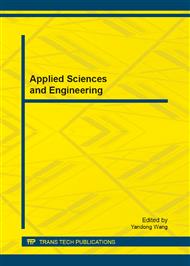p.283
p.292
p.297
p.302
p.307
p.311
p.316
p.321
p.327
A Novel RNA Genetic Algorithm for the Application with Boundary-Layer Problems of the Fluid Mechanics
Abstract:
The boundary-layer theory explains very well the steady-state flow over a flat plate at zero incidence angle known as the Blasius flow. It is long known that the appearance of boundary layers is not restricted to the canonical problem of the motion of a body through a viscous fluid. Several other technologically important sources of boundary-layer behavior are the flows behind expan- sion and shock waves travelling over smooth surfaces and the flow above a moving conveyor belt. In fluid mechanics, to obtain the multiple solutions in ordinary differential equations is always a concerned and difficult problem. In this paper, a novel RNA genetic algorithm (NRNA-GA) inspired by RNA molecular structure and operators is proposed to solve the parameter estimation problems of the multiple solutions in fluid mechanics. This algorithm has improved greatly in precision and the success rate. Multiple solutions can be found through changing accuracy and search coverage and multi-iterations of computer. At last, parameter estimation of the ordinary differential equations with multiple solutions is calculated. We found that the result has great accuracy and this method is practical.
Info:
Periodical:
Pages:
307-310
Citation:
Online since:
September 2012
Authors:
Price:
Сopyright:
© 2012 Trans Tech Publications Ltd. All Rights Reserved
Share:
Citation:


